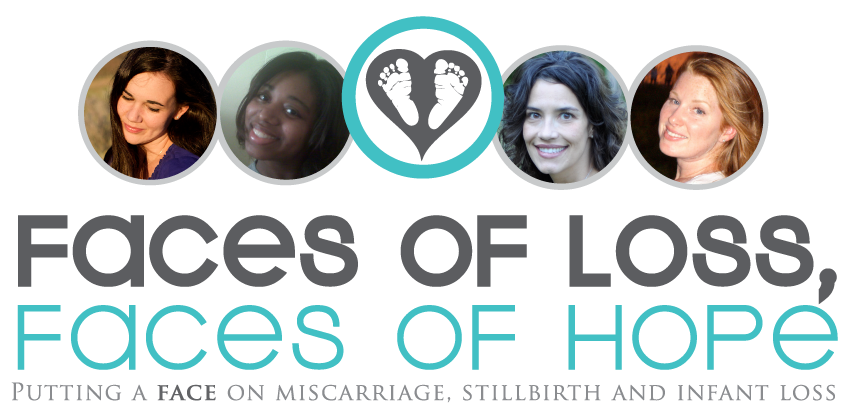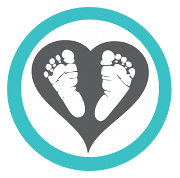Audrey
Mom to Eva Anise
March 6th, 2007 - April 4th, 2007
Vienna, Virginia
Given my irregular cycle, diffident personality and generally low expectations, I thought it would take some time, perhaps a year, before we would get pregnant. It happened the first cycle. Both times. Aside from my stint on a jury, my first pregnancy was uneventful. My second pregnancy was anything but.
It was the exercise that made me realize that I was pregnant. Through the Spring and Summer, I had been working up to jogging longer and longer distances around a lake near our house. Finally, I was able to jog the whole loop and was working to increase my speed. Grass grew faster than my legs could carry me. But it’s true what they say about running being a mental exercise as much as a physical one, so once I started a jog, I would not allow myself to fall short of my goal. There came a day, however, when I simply couldn’t do the whole 4.5 mile loop without stopping to walk for a bit. So that’s how I knew.
I went in for an early dating ultrasound around the time I assumed I was 6 weeks along. My OB from my first pregnancy was no longer in the area and we had also moved, so I took a recommendation for a new practice. The first OB I met in the practice did my trans-vaginal ultrasound, provided me with a picture of our fetus that you mostly have to use your imagination to conjure and sent me on my way with a due date of April 11, 2007.
I was determined to have a “healthy pregnancy” this time because I felt that my weight during my first pregnancy made the experience needlessly uncomfortable and was an unnecessary risk to both my health and to the health of our child. I was so big with baby and fat all on my own at the end of my first pregnancy that when the anesthesiologist told me to bend forward for my epidural, I could move little more than my head. "Does my chin count?" I wondered. So this time, I intended to keep up with my exercise although the doctor did recommend that if I wasn’t a “seasoned” runner that I move to something a little less strenuous. (Darn!) One of the ways I got exercise was through a pre-natal yoga class, where most of the other attendees were also on their second pregnancies. We all lamented that we seemed so much bigger so much sooner this time around and the instructor solemnly, even soulfully, replied, “The body remembers.” Om, indeed.
At 16 weeks, I had the AFP triple screen. A week later, I got a call from one of the doctors in the practice and he indicated, in the most reassuring and positive way imaginable, that the results showed an increased likelihood for neural tube defects. He was so supportive, upbeat and dismissive of the results that you could have mistaken this call for good news. This was a Friday afternoon and I am sure I don’t have to tell you what we spent that weekend doing. Yep, you guessed it, self-diagnosing with an assist from Dr. Google. We were referred to the maternal fetal medical clinic at our hospital for a level II ultrasound the following week, but by then we were thoroughly convinced that we were simply mistaken about our dates and that everything would indeed be fine. It’s not as though we didn’t read about AFP levels differing for multiple gestation pregnancies, but we had categorically dismissed this possibility. After all, I had irregular cycles, so the simplest explanation was likely the right one. Back me up here, Occam!
I remember waiting in the lobby of the Antenatal Testing Center – the nubby-textured chairs and soothing color palette juxtaposed against the tension pouring off people (okay, us) and the vulgarity of the blaring mounted television. No one wants to watch The Price is Right under the circumstances, I assure you. We were finally called back and no sooner had the ultrasound wand made contact with my gooped up middle (a feeling I would come to know and loathe all too well), did my husband see the cause for the irregular AFP results. “Am I seeing what I think I am seeing?” he asked. He was seeing two heads. We were positively giddy, and I mean giddy in that laughing nervously and thinking about minivans kind of way. But we were there so long that all our excitement and much of the goop wore off and I was getting hungry.
The ultrasound technician was mumbling something about a membrane, which turned out to be important.
At that appointment, 18 weeks into the pregnancy, we were diagnosed with monochorionic monoamniotic twins. These are monozygotic or identical twins that split late, after not only the placenta has started to form, but also the amniotic sac. Because of this late splitting (later still and the twins would be conjoined), the babies must share an amniotic sac, which puts them in significant danger of cord accident. The absence of the membrane separating the babies meant that there were two babies and two sets of cords in one amnion, increasing the possibility that the babies would become entangled, cause knots in the cords and cut off their blood supplies. If a cord accident happens, both babies typically die. There is nothing that can be done to prevent the loss of the pregnancy to cord accident prior to the point of viability, say 24 weeks. The typical care protocol in the US is aggressive inpatient monitoring for the mother from viability (determined by the family – 24 to 28 weeks, generally) to delivery by c-section (32 to 34 weeks, generally). “MoMos” as they’re called are very rare, comprising about 1-2% of identical twin pregnancies. Fortunately, the most common outcome for these pregnancies is the delivery of two healthy babies, but losses and other complications are more common than in the general population, or even within the twin population. The Maternal Fetal Specialist informed us of mortality and morbidity rates after our ultrasound and as upbeat as my OB was, this doctor was equal in her sobriety. We came to call her Dr. Hangdog.
We were sent home that day to try to process the fact that a) we were having twins and b) at any moment the girls could die in utero, but there was more bad news. At 20 weeks we found out that Eva, baby B, had a complex heart defect called hypoplastic left heart syndrome (HLHS). I felt and still worry that my feeble attempts at running robbed her of blood supply in those critical early days of development. We were referred to yet another specialist, a pediatric cardiologist who delivered the news to me along with an impressive freehand drawing he made on the spot and then asked, “Are you going to break down now or in the car?” I think he was holding a box of tissue as he said this, but I could be making that up. This time, I gave Dr. Google the weekend off. I could not take in another single piece of information. Even though I tried, I couldn’t make sense of what I was reading, so I stopped reading and started listening to the doctors.
The doctors said come in at 24 weeks to be admitted. I went to the hospital at 24 weeks, leaving my husband and son behind just days before Christmas. Over the coming interminable weeks, I counted days by ultrasounds, non-stress tests and meals, such as they were. We experienced the emotional whiplash of dozens of (often conflicting) opinions and the turmoil of uncertainty. The 11 weeks away were most difficult, I think, for my husband and son, but my nerves, too, were frayed by the end. I remember reading that most cord accidents happen while the mother is asleep. So, yeah, I tried not to do that anymore. And after I hit 34 weeks, I started to feel like I was playing with fire. Carrying MoMos beyond 34 weeks felt like uncharted territory and I felt tortured by the idea that what was best for one twin and what was best for the other were two diametrically opposed courses. 34 weeks was best for A; 37 weeks or more was best for B.
In the end, the decision about when to deliver was ours. The four perinatologists in our practice were split on when to deliver. The cardiac surgeon who would operate on Eva, the pediatric cardiologist who had monitored the girls, the neonatologists whose job was seemingly to scare us, all had some voice in the cacophony, but in the end, it was just me and my husband. We ultimately delivered at 34 weeks, 6 days gestation (after being rushed to L&D at 34 +4 with heart decelerations on both babies, which disappeared once we got to L&D, thankfully). That timing seemed to balance the desire to get Eva as big as possible (in preparation for surgery) with the terrifying risk of losing both babies (a study suggested that the risk of cord compression increases after 34 weeks).
The good news is that after 77 days in the hospital, I gave birth to two live, beautiful (if a little scrawny) girls. The cords were twisted, but not knotted as much as some I've seen and heard about. Baby A was 5 lbs, 12 oz. and B (Eva) was 4 lbs, 9 oz. Although we were disappointed (the estimates suggested they'd each be about a pound bigger), the news quickly turned positive. We were expecting Eva to be cyanotic (blue), but she wasn't. Her Apgars were a solid 6 and 8. Better still, the EKG on Eva gave us unexpected hope. She appeared not to have classic HLHS, but a less severe variant. Suffice it to say that as time went on, we got the best news we could have gotten regarding Eva short of "Oops! Our bad. Her heart is perfectly normal."
She still needed surgery but in light of everything else, we were confident and happy that it would go well. Everyone was confident. My most enduring and cherished memory is holding Eva in my arms the night before her first operation. I suppose you can guess where this is going. On the day of surgery, I had a minor car accident and didn't get to walk her to the OR. In what became a theme of guilt and shame for me, I wasn’t there when Eva needed me, THEREFORE, she went into cardiac arrest before the surgeons even began the repair. I was in the hospital lobby and was about to deliver some baked goods to the nurses who took care of us in the antenatal unit when I received a call from the surgeon’s assistant saying that there’d been a problem and that she’d meet me upstairs. They put us in a tiny, unkempt room where we sobbed and sobbed. I had never seen my husband cry before. Eva was put on heart-lung bypass and through what was surely a tremendous effort (they used the word "grave"), her heart was restarted. But I can see now that that was the beginning of the end. She was on bypass for a few days in order to give her a chance to recover and regain strength. But she still needed to have the original repair to her heart. The surgeon told us frankly that she could well die during the 2nd operation. She didn't. In the days that followed, she had every complication under the sun, including a partially collapsed lung and renal failure, but she lived. The surgeon once told us that he was surprised to find her still alive when he came in one day. Another doctor told us he'd never seen such a tiny baby show so much toughness. I know now that it was merely a platitude, but man, did I cling to those words. She made tiny incremental improvements and her last day was her strongest. I didn't see her on her last day because I'd gotten a cold. Infection was such a huge risk (her chest cavity was kept open), that I abandoned stayed away and that is very high on my list of regrets. My husband was with her that last night and came home in good spirits. She was urinating. Her stats looked good. Before going to bed at midnight, he called the PICU (where she was taken after surgery) and all seemed well and we were imagining bringing her home. But forty minutes later we were called to the hospital. I went in my pajamas. We ran every red light on the way to Eva's bedside. In hindsight, it seems they kept Eva alive until we could get there. She died at 1:20 a.m. on April 4th, 2007 from respiratory failure. She was 29 days old.
What I remember was holding her in my right arm and the softness of her skin and hair. I remember telling her that she fought so hard and that it was okay and that we were proud of her. I remember the tears in her nurse's eyes and I remember falling apart while trying to drop my son off at daycare that morning. And there are the things that I remember that I still can't articulate.
Raising one identical twin has been bittersweet. You can never simply forget, but you can never take what you do have for granted either. Every happy moment is a moment that Eva should be sharing, and every sadness is more acute, more vivid in the shadow of her absence. Eva is so much a part of me. In some ways, she is more a part of me than my surviving children. While my other children are their own people and separating into their own lives a little more each day, Eva is like that early ultrasound, an image that I mostly conjure. Three and a half years on, I still think of Eva all the time. In the end, the simple fact of her absence has become the thing that defines me at my core. The life I live in the silence of my own mind is often dominated by the life that will never unfold. It is strange, but it is true.
.png)


















1 comments:
i found my way here through the comment you left at my place. i am nodding, at the "more a part of me than my surviving children" piece. for all the letting go, i know what you mean, and i have never found the words for it before.
thank you, for telling Eva's story here.
Post a Comment